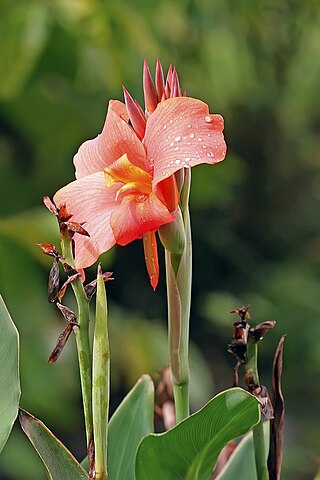
Canna or canna lily is the only genus of flowering plants in the family Cannaceae, consisting of 10 species. All of the genus's species are native to the American tropics and naturalized in Europe, India and Africa in the 1860s. Although they grow native to the tropics, most cultivars have been developed in temperate climates and are easy to grow in most countries of the world, as long as they receive at least 6–8 hours average sunlight during the summer, and are moved to a warm location for the winter. See the Canna cultivar gallery for photographs of Canna cultivars.
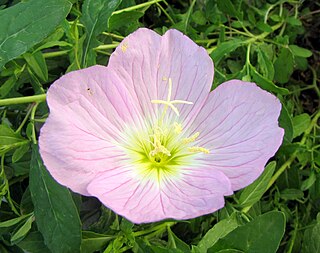
Oenothera speciosa is a species in the evening primrose family known by several common names, including pinkladies, pink evening primrose, showy evening primrose, Mexican primrose, and buttercups.
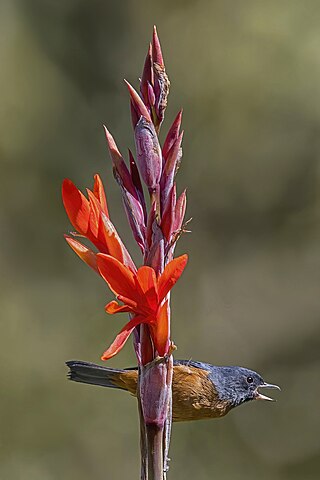
Canna indica, commonly known as Indian shot, African arrowroot, edible canna, purple arrowroot, Sierra Leone arrowroot, is a plant species in the family Cannaceae. It is native to much of South America, Central America, the West Indies, and Mexico. It is also naturalized in the southeastern United States, and much of Europe, sub-Saharan Africa, Southeast Asia, and Oceania.
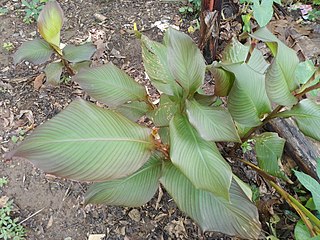
Canna discolor also known as Achira in Colombia is a species of the Canna genus, belonging to the family Cannaceae, found naturally in the range from South Mexico to Colombia, widely introduced elsewhere. It is a perennial growing to 3m. It is hardy to zone 10 and is frost tender. In the north latitudes it is in flower from August to October, and the seeds ripen in October. The flowers are hermaphrodite.

Canna flaccida is a species of the Canna genus, a member of the family Cannaceae. The species is indigenous to the wetlands of the south-central and south-eastern United States from Texas to South Carolina. It is also reportedly naturalized in India, the Philippines, Mexico, Panama, Cuba, the Dominican Republic, Peru and southern Brazil.
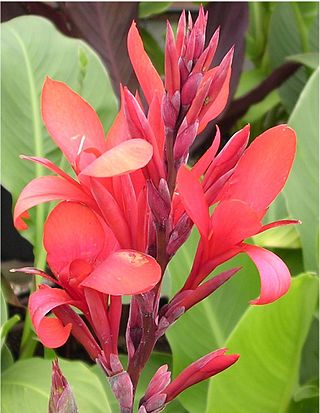
Canna coccinea is a species of the Canna genus, belonging to the family Cannaceae. A native of northern Argentina., it was introduced in England from South America in 1731.
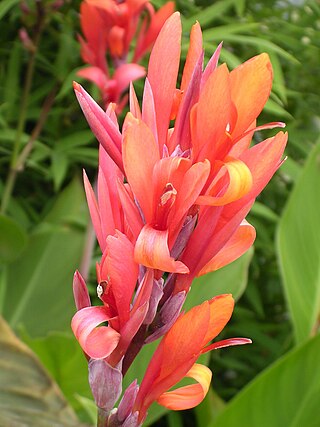
Canna compacta is a species of the Canna genus, belonging to the family Cannaceae, distributed between the south of Brazil and northern Argentina. Introduced to England from South America in 1820. Not to be confused with C. compacta Bouché, which is a synonym of C. indica L.
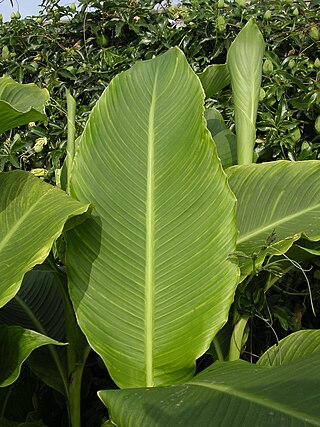
Canna tuerckheimii is a species of the Canna genus, belonging to the family Cannaceae. Its specific epithet tuerckheimii commemorates Hans von Türckheim, a 19th-century German plant collector.
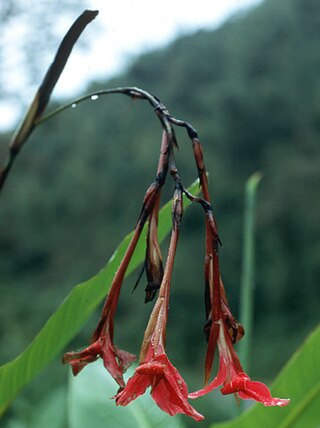
Canna iridiflora is a species of herb in the family Cannaceae.
Canna bangii is a species of herb in the family Cannaceae. It is native to Peru and Bolivia.
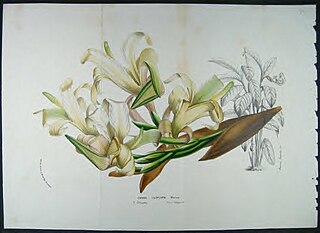
Canna liliiflora is a species of herb in the family Cannaceae. It is native of Peru and Bolivia.

Canna patens is a species of herb in the Cannaceae family.
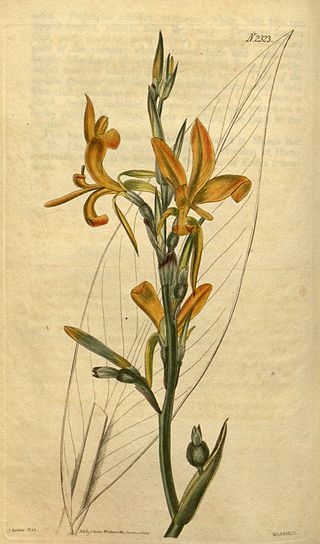
Canna pedunculata is a species of the Canna genus, belonging to the family Cannaceae. Native of south-east Brazil at low altitudes. Johnson's Dictionary of 1856 reports that it first entered England in 1820, pedunculata meaning 'long-flower-stalked'.

Canna jaegeriana is a species of herb in the family Cannaceae.

Canna paniculata is a species of the Canna genus, belonging to the family Cannaceae. Native of southern Mexico, Costa Rica, and tropical South America, except for the Amazon Basin, at 200-2,000m (650-6,500 ft).
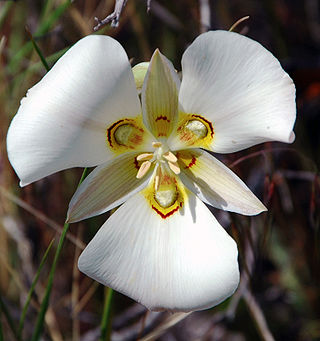
Calochortus nuttallii, also known as the sego lily, is a bulbous perennial plant that is endemic to the Western United States. The common name of sego comes from a similar Shoshone word. It is the state flower of Utah.

Symphyotrichum laeve is a flowering plant native to Canada, the United States, and Coahuila (Mexico). It has the common names of smooth blue aster, smooth aster, smooth-leaved aster, glaucous Michaelmas-daisy and glaucous aster.

Anemone virginiana is an upright growing herbaceous species of flowering plant buttercup family Ranunculaceae. It is a perennial that grows 30–80 centimetres (12–31 in) tall, flowering from May until July, the flowers are white or greenish-white. After flowering the fruits are produced in a dense rounded thimble shaped spikes 15–35 millimetres (0.59–1.38 in) long and 12 millimetres (0.47 in) wide. When the fruits, called achenes, are ripe they have gray-white colored, densely woolly styles, that allow them to blow away in the wind. The leaf structure is whorled halfway up the stem and each individual leaf appears to be deeply cut. Native from eastern North America, where it is found growing in dry or open woods. This plant can be found in 38 out of the 50 states in the U.S. and is located anywhere from Maine to Minnesota going west, and found as far south as Georgia and Louisiana.
Canna amabilis is a species of herb in the family Cannaceae. It is native to Northern Argentina.




















